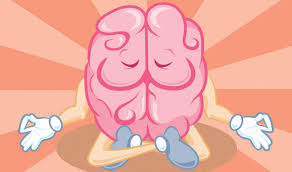 Picture:http://www.kpfit.club/hatha-yoga/
Picture:http://www.kpfit.club/hatha-yoga/
Many of my peers like to go to weekly yoga. All I know is that it helps to stretch the body but I have wondered is there any science involved. I wanted to get more information about yoga and a possible answer to my question. I have found after researching online that yoga “Current research suggests that a carefully adapted set of yoga poses may reduce low-back pain and improve function.” (1) I find it very helpful that studies are being done in order to find out all that yoga has to offer to people. It also says that “Other studies also suggest that practicing yoga (as well as other forms of regular exercise) might improve quality of life; reduce stress; lower heart rate and blood pressure; help relieve anxiety, depression, and insomnia; and improve overall physical fitness, strength, and flexibility.” (1) This is very good news meaning people can get help without having to necessarily drink medication. The source even states this from the results of the studies. It says “Conclusions from another 2011 study of 313 adults with chronic or recurring low-back pain suggested that 12 weekly yoga classes resulted in better function than usual medical care. “(1)But this cannot rule out the possibility that it does not work. The article goes on to say that “A 2011 review of the literature reports that few published studies have looked at yoga and arthritis, and of those that have, results are inconclusive.” (1) This confirms the suspicion that it cannot be completely ruled that yoga might not be the best alternative for some people that have arthritis and other conditions such as that. Other sites go into detail how yoga affects our brains. In one site it says “ it moderates the cortisol hormone keeping the individual calm.”(2)And “After conducting MRI scans, scientists have discovered that people practicing yoga have more gray matter (brain cells) than the non-practitioners do.”(2)
Having this grey area helps expand the brain according to the site and helps the person since they have more room for “mental mapping” in our bodies. This sounds fascinating but I still would want more science behind yoga. When searching for the science behind yoga most of the websites were not very reliable sources that weren’t overly biased or trying to sell something. I hope there can be more studies done and science related evidence for yoga.
Sources:
- “Yoga: In Depth | NCCIH.” U.S National Library of Medicine. U.S. National Library of Medicine, n.d. Web. 18 Nov. 2016.
- Conclusions from another 2011 study of 313 adults with chronic or recurring low-back pain suggested that 12 weekly yoga classes resulted in better function than usual medical care.



 Many factors can influence our heights.( For example, the nutrition we intake in childhood, the amount of foods we consumed in childhood can influence heights.) Therefore we have several possible explanation for the correlation between heights and cancer risks. Growth factor is a circulating level of protein which is influenced by exercises, stress, body mass index and nutrition. It is associated with both increased height and cancer risk. So taller people (while young) are exposed to higher levels of growth factors, which could possibly promote cancer development.
Many factors can influence our heights.( For example, the nutrition we intake in childhood, the amount of foods we consumed in childhood can influence heights.) Therefore we have several possible explanation for the correlation between heights and cancer risks. Growth factor is a circulating level of protein which is influenced by exercises, stress, body mass index and nutrition. It is associated with both increased height and cancer risk. So taller people (while young) are exposed to higher levels of growth factors, which could possibly promote cancer development. So it is easy to understand that the more cells you have, the much number of cells might be abnormal. A third possible explanation is that taller individuals have a higher caloric intake, which has also previously been linked to cancer. These explain why heights and cancer risks relate each other.
So it is easy to understand that the more cells you have, the much number of cells might be abnormal. A third possible explanation is that taller individuals have a higher caloric intake, which has also previously been linked to cancer. These explain why heights and cancer risks relate each other.